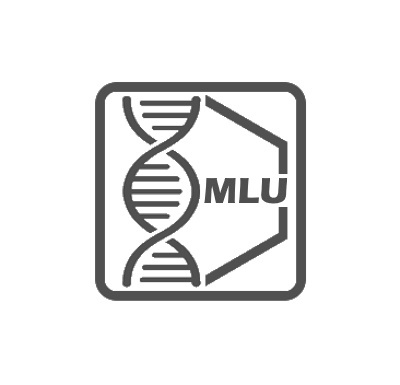Gary Sawers
Prof. Gary Sawers

Institute for Biology/General Microbiology
Kurt-Mothes-Straße 3
06120 Halle (Saale)
phone: +49 (0) 345-55 26350
gary.sawers@mikrobiologie.uni-halle.de
Molecular Dissection of the Carbamoyltransferase, HypF, and its Role in Generation of the Cyanide Ligands of [NiFe]-Hydrogenases
Hydrogenases are important microbial enzymes involved in hydrogen metabolism. They catalyze the reversible oxidation of molecular hydrogen into protons and electrons. The bimetallic active site of [NiFe]-hydrogenases is unusual because the Fe ion carries three diatomic ligands, namely one carbon monoxide and two cyanides. This feature is so far unique in biology. If these ligands cannot be attached to the Fe atom, e.g. by mutation of a key gene encoding an enzyme on the biosynthetic pathway of the ligands, then no active hydrogenase enzymes can be synthesized. The aim of our project is to understand how these ligands are synthesized and attached to the Fe ion.
Four proteins, HypC, HypD, HypE, and HypF, are conserved in all microorganisms that synthesize [NiFe]-hydrogenases and these have been shown to participate in CN- ligand synthesis. HypF is the central enzyme in this process. It has a carbamoyltransferase activity, and it has been proposed that carbamoyl-AMP, derived from carbamoylphosphate and ATP, acts as a key intermediate in the transfer of the carbamoyl moiety from HypF to the C-terminal cysteinyl residue of HypE. HypE subsequently catalyzes the ATP-dependent dehydration of the thiocarboxamide to produce a thiocyanate. The transfer of the cyano group to the Fe is thought to occur on the HypC-HypD complex. Biosynthesis of the CO ligand follows a different route, possibly involving reduction of CO2.
HypF is a large monomeric protein with a N-terminal acylphosphatase domain (amino acids 1–91), which dephosphorylates carbamoylphosphate. In collaboration with the group of Miroslaw Cygler in Canada, we recently solved the structure of E. coli HypF(92–750) lacking the N-terminal acylphosphatase domain. HypF(92–750) comprises a novel zinc-finger domain, a central nucleotide-binding YrdC-like domain, and a Kae1-like domain, which also binds a nucleotide and a metal ion, possibly Fe2+. Previous reports have indicated that HypF does not bind DNA, suggesting a potentially novel role for the zinc-finger domain. The YrdC-like domain converts carbamate to a carbamoyl-adenylate intermediate, which is channeled to the Kae1-like domain. Mutations within either of the nucleotide-binding sites compromise hydrogenase maturation but they do not affect the carbamoylphosphate phosphatase activity. One of the aims, therefore, of our current research is the analysis of the domains of HypF with the aim of elucidating the function of the novel zinc-finger domain.
In a further recent development we have observed some HypF-independent processing of the hydrogenase large subunit when E. coli cells in the stationary phase are incubated in the presence of high CO2 concentrations. Since CO2 is a direct precursor of carbamoylphosphate, the substrate of HypF, it is conceivable that in the absence of nucleic acid and arginine biosynthesis (these pathways compete with hydrogenase maturation for the common substrate carbamoylphosphate) sufficient carbamoylphosphate is present to function directly as a substrate for the HypE protein. Thus, a second major aim of our project is to isolate under anaerobic conditions a HypC-HypD-HypE complex from a ΔhypF mutant grown to stationary phase in the presence of high concentrations of CO2. This complex will be analysed by infrared spectroscopy, which allows the facile identification of a bound Fe(CN)2CO moiety. If present, this would provide proof for our hypothesis of HypF-independent synthesis of the cyanide ligands to the iron ion in the hydrogenase actve site and strongly suggest that one of the main functions of HypF is the effective competition with other biochemical pathways for the carbamoylphosphate substrate.




